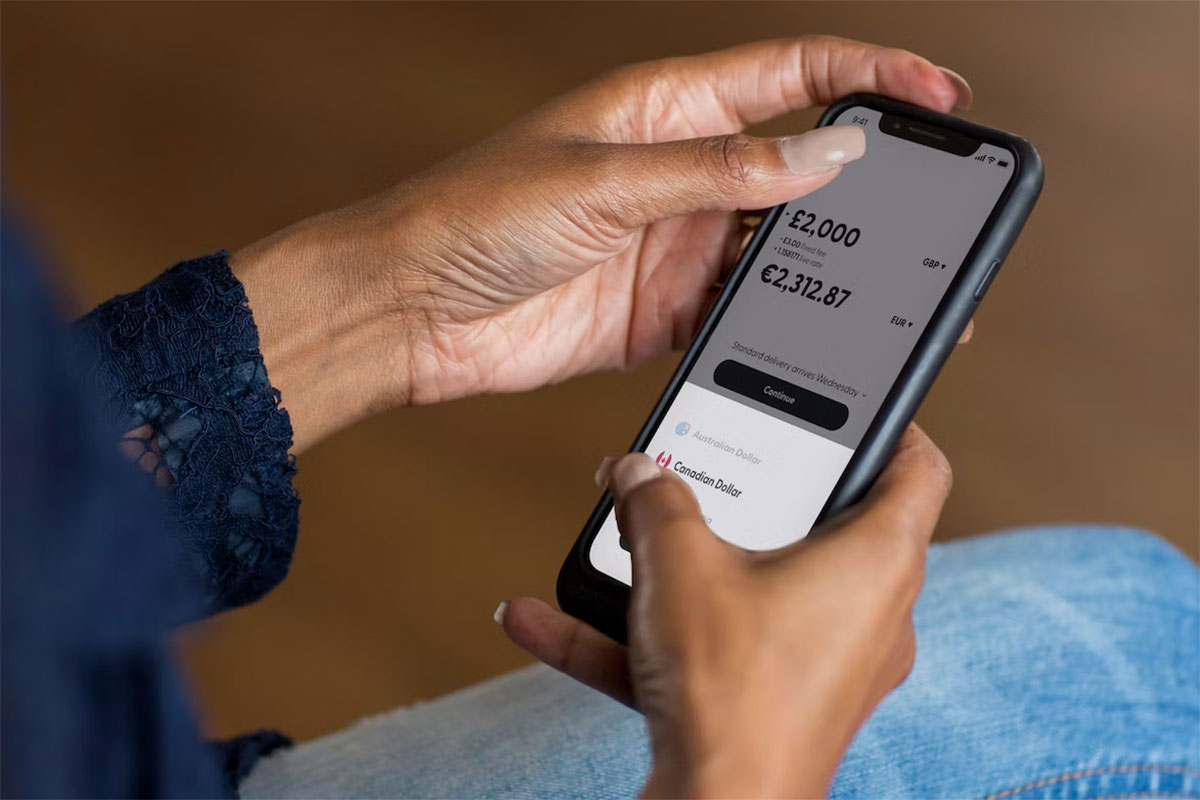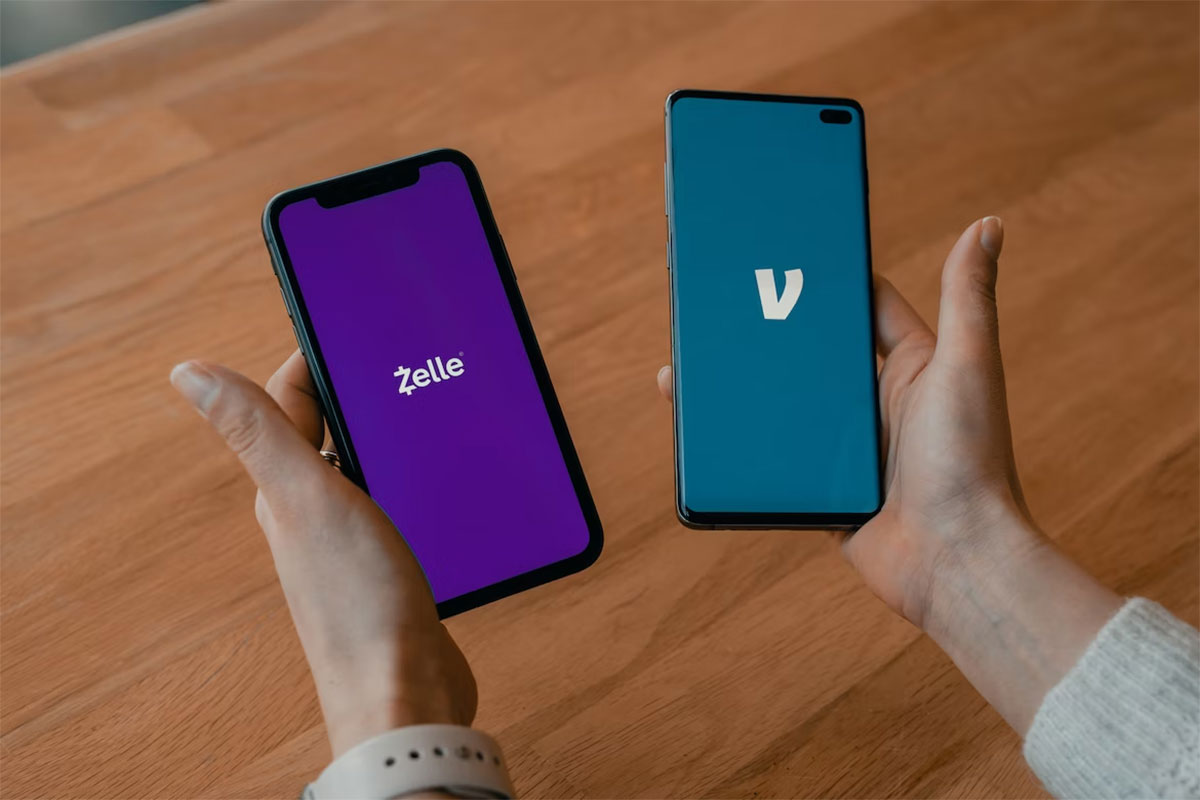Many digital applications help people store and transfer their money securely, ensuring quick transfers, including international ones, without large commissions.
While their functionality is much more limited than banks, they focus on the function of transfer and strive to realize it in the best way.
Considering the hardships of money transfer within banks, such as low transfer speed and high fees, and the development of money transfer technologies, they remain relevant today.
So, money transfer app development may be a good place for you to start your venture, although this topic requires some specific expertise. You should know how digital money is stored in e-wallets, be familiar with cybersecurity, which is crucial here, learn financial laws, and explore new relevant technologies such as crypto and blockchain.
Let’s see the essentials of money transfer apps, the top 10 well-known examples, and then see how you can develop such an app!

Photo by Atlantic Money on Unsplash
Money Transfer Essentials
To transfer money from one account to another, you’ll usually use your bank account with your debit or credit card linked to it. Neobanks, which are fully online, try to make the situation easier, enabling quicker transfers and lower fees. Money transfer apps, in contrast, are focused purely on money exchange, although they may provide various additional features and even issue their own cards.
They are independent of banks and use electronic wallets to store money and secure payments. To use some of them, you still need to connect your bank card, but after that, all transactions are made via the app rather than via the bank account directly. Some of them provide their own digital purses where you can store various currencies, from EUR and USD to crypto.
They work with various exchange rates and often earn money on exchange differences while still usually providing better rates than most banks. Some of them use fixed commissions, so they’re better for transferring large sums, while others provide more flexible rates.
How They Work: Comparison with SWIFT
You’ve probably heard of the SWIFT protocol for financial communications. While it’s secure and widely used, it has disadvantages such as long proceeding time and relatively high commissions. They usually utilize intermediary banks and complex schemes to complete the payment. That’s why they have a waiting time of up to 1-2 weeks and commissions of up to 5% per payment. Remember also that transfers between various banks, even with the same currency, may cost you additional commission!
Digital money works differently. They transfer money using encrypted online services, where money is simply encoded in the form of information. While it may seem insecure, the security depends on how well the service is encrypted and protected. The benefits are large: in such a form, money can be transferred almost instantly, similarly to messages, and without any borders.
The Top 10 Examples of Money Transfer Apps
Let’s now discuss the top 10 most popular money transfer apps. While it’s a top list, we don’t think that some of these apps are better than others: we classified them based on how they fit various purposes.
For example, while PayPal enables quick and secure payments between accounts, Payoneer is good for small businesses to be paid, Wise is a feature-rich app with its own multi-currency account, and Payeer provides a variety of cryptocurrencies. Some of these systems also issue their cards, most of which are available only for residents of certain countries.
All of them require you to identify yourself in the system using your passport or other government ID. Without that, you’ll be very limited in your abilities to use these services.

Photo by Tech Daily on Unsplash
PayPal: The first and the most known
When we think about a money transfer app, PayPal is often the first label that comes to mind. It’s quick, secure, and easy: just connect your bank cards here, and you’ll be able to obtain and send payments worldwide!
💳 PayPal card is available in many countries.
Cash App: Low fees and quick transfers
This money transfer app enables quick transfers with low fees and additional features, such as buying crypto and stocks inside the application. It can be used, however, only in the U.S. and the U.K.
💳 It also provides a physical card in partnership with banks.
Meta Pay: Ideal for small transfers
Formerly Facebook Pay, it is a platform for making payments using Meta networks: Facebook, Instagram, and if you’re in Brazil, WhatsApp. Due to small commissions, it’s ideal for sending a small sum of money to a friend or collecting small donations for various activities.
Wise: Transparent exchange rates and feature-rich
This platform is a good choice if you need to proceed with international payment and don’t want to bother with SWIFT or unclear exchange rates. It provides a wide list of available currencies and prices, clear commissions for each currency pair, and many other features.
💳 A Wise debit card is also available.
Payeer: A multi-currency e-wallet
Along with digital wallets in several currencies, including USD and EUR, it also provides several cryptocurrency accounts, enabling quick in-app exchange with a minimum commission and live rates monitoring. So, it’s a good option for secure cryptocurrency payment without further bothering about how to exchange it.
💳 Similarly, it issues its own debit card.
WorldRemit: Quick and easy-to-use international transfers
It specializes in international transfers, and you may instantly check the rates on its website on in the application. Payments are fast and require no additional actions, which saves time and money greatly.
Remitly: Send money between accounts
This platform is also designed for international payments, despite the number of countries where it operates is currently lower compared to WorldRemit. Similarly, you can easily check the rates before payment, which are usually user-friendly.
Venmo: Instant payments and bank account connection
This service is intended for shared payments: it enables connecting bank accounts and paying together for bills and any other activities. It includes a small social network-like interface, enabling messaging between friends.
💳 It also issues its own physical cards.
Payoneer: A platform for small businesses
It allows opening an account and obtaining payments using only your email address. Money may be then withdrawn to your local bank. It’s mostly suited for business use, not for personal transfers.
💳 Similarly, it issues a physical USD card.
Zelle: Making bank-to-bank transfers easy
It makes exchange between banks much quicker and easier, so you can send and receive money to friends without bothering about which bank they have their cards. However, it’s supported only in the U.S. and isn’t suited for international payments, and its functionality is more limited compared with other tools in this list.
How to Develop a Money Transfer App
Do you wonder to create an app that may compete with those giants above? It seems that the market is saturated, and money transfer is a very narrow and specific niche. How could you overcome PayPal, for example, with its more than 20-year history and millions of users?
However, ever considering all its advantages, PayPal is mostly an old-school option. In 2023, when cryptocurrencies attract increasingly positive attention and new secure transfer methods are constantly developing, implementing new business strategies is very relevant. See the steps below to check the most important development points:
- Create a prototype, define a basic functionality, and develop a money transfer portal as the app’s core.
- Create a CRM for managing your user profiles and enabling them to register and prove their identities.
- Reporting and accounting are important parts of any money transfer application, so ensure that your users will track their money easily.
- Design a friendly interface, ensuring that all features will work properly.
- Check compliance with all fintech-related laws and your app’s security to prevent any chance of hacking.
Save this list before you’ll begin the development. Remember that it’d be better to start with a really innovative idea, which makes transfers easier and cheaper!
Future Relevance
The money transfer is actual as never before. International transfers used to be slow, expensive, and often even unreliable. SWIFT technology made them reliable, but two other disadvantages remained and persisted for a long time. Now, however, with apps like Wise and WorldRemit, the situation is different and international payments may be made with several clicks.
Money transfer apps will evolve further as new approaches continue to develop, especially those connected with cryptocurrencies. Probably, in the future, they’ll enable almost free transfers between any currencies with minimum commissions and minimum bank control. It’d be exciting to participate in this process, right?
Conclusion
The money transfer app market may be a good entry point for you if you’ll become familiar with related technologies, including blockchain and crypto, and financial laws in various countries. To create a successful application, you must implement a new business decision, making transfers quicker and more secure. If you’ll be able to provide convenient exchange rates and effortless international transfers, it’ll certainly attract even more customers.









